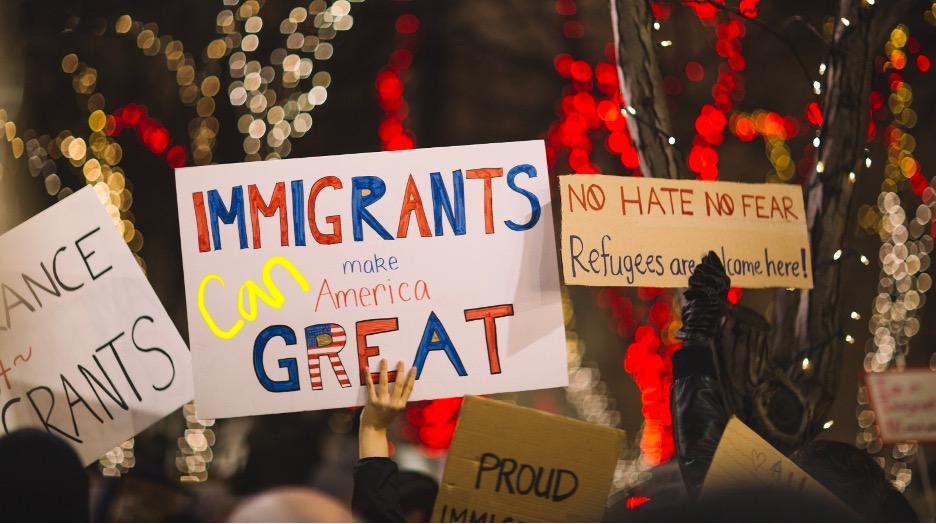The public health emergency (PHE), and immigration law Title 42 along with it, ended earlier this month. And, so far, it hasn’t devolved into the chaotic scene that many on the Right and Left feared. This doesn’t, however, mean that we’re in the clear.
The sheer volume of people who have chosen—or, rather, been forced—to flee their homes due to geopolitical issues—war, famine, corruption—continues to present a unique challenge for America and the rest of the world.
Tens of thousands of migrants risk their lives to wait in border towns in the hopes of being granted access to a better life. And millions more attempting to enter legally have no option but to seek asylum as there are over one million work permits in the queue and current backlogs will have some waiting 150 years to become permanent residents.
In Part One of this post, I noted that it has been decades since any substantive immigration reform, but attempts are being made to try and halt further deterioration both at the border and beyond. For example:
- The U.S. has committed $2.8 billion in humanitarian, development, and economic aid to Venezuela alone since 2017 to help address the nearly half a million Venezuelans who fled to the United States as of 2019.
- President Biden tripled the number of refugees accepted into the U.S. in 2023 and expanded a sponsorship program that grants temporary access to 30,000 migrants each month from long-suffering nations such as Cuba, Haiti, and Nicaragua, provided they have an eligible sponsor and pass a background check.
Many on the Right, however, feel these attempts are misguided. Fiscal conservatives ask, first and foremost, how we’re paying for all this. Recent debt-ceiling negotiations have made clear that the U.S. is not exactly in the financial position to be doing more for more people. For decades, the government has committed to spending more money than it brings in, be it on social security, defense, healthcare, or immigration. Spending beyond our means has brought us to this moment. It is an inflection point for the nation. If we default on our debt, which is a real possibility, we won’t be able to fulfill our obligations to Americans, let alone anyone else.
Republican politicians can and do prey on the fears of their base when it comes to immigration. And these fears are not without merit. Many conservatives wonder how, exactly, immigration policies are being enforced, especially with so many people being admitted at once with minimal screening. It’s not unreasonable to want to know the backgrounds or intentions of those who will enter, or how many we can reasonably accommodate. When liberals cast such questions as xenophobic or cruel, this alienates some conservatives, driving them into the welcoming arms of someone like Trump who not only listens, but validates their concerns.
But besides possibly being overly generous and chaotic, a critique that many conservatives have is that certain aspects of immigration are simply nonsensical.
For example, the H-1B system provides temporary visas for high-skilled immigrants, but recipients are chosen at random. Robert Verbruggen of the Manhattan Institute has argued that immigration should be based more on the factors found to be highly predictive of success for previous immigrants: education level (and field of study), occupation and English proficiency. This, according to Verbruggen, would lead to more tax revenue and less chance that an immigrant will use (or overuse) government benefits.
Along similar lines, Verbruggen makes the case that fewer individuals should receive green cards “based on family relationships.” Specifically, he argues we should only admit spouses and minor children of those who receive green cards and not adult children or extended family. This would increase the number of green cards available for workers.
This last point might be particularly sticky for liberals, who might view such changes as heartless or lacking compassion. Liberal arguments for taking in more immigrants and asylum seekers almost always appeal to empathy. Not many would disagree with the need for a country or world that is more compassionate and empathetic—in theory. But a considerable amount of research suggests that appealing to empathy, alone, is not enough to sway conservatives and right-leaning voters, in particular, because it is outweighed by their other concerns. Which is why I keep harping about MFT.
If liberals are interested in doing the most good for the most people in the long run, they would do better to make an economic case, in particular, for immigration, as Verburggen did above. Selecting future citizens based on who will be most likely to contribute aligns more with the moral priorities of the Right and Right-leaning voters, and might help bring about the reform that is so badly needed to help more immigrants overall.
Unfortunately, any conversation across the aisle is made more difficult by the fact that Republicans have shifted from the party of Reagan, who publicly endorsed amnesty for immigrants who once entered illegally, calling them America’s “most important source of greatness,”to the party of Trump, who infamously referred to immigrants as “criminals and rapists” and sought to end even legal immigration. However, appealing to economic benefits and other moral concerns is not meant to sway Trump’s base, it’s meant to reach the non-extremist voters hovering around the political middle. There are more of them than Twitter would have you believe.
Reforming elements of immigration policy like H-1B visas and green card criteria will not be enough to fix our current predicament. But it is a step in the right direction. If we’re ever to return to the balanced budgets of the Clinton era, we’ve got to start somewhere. And maybe we can help improve more lives while we do it.

.png)
